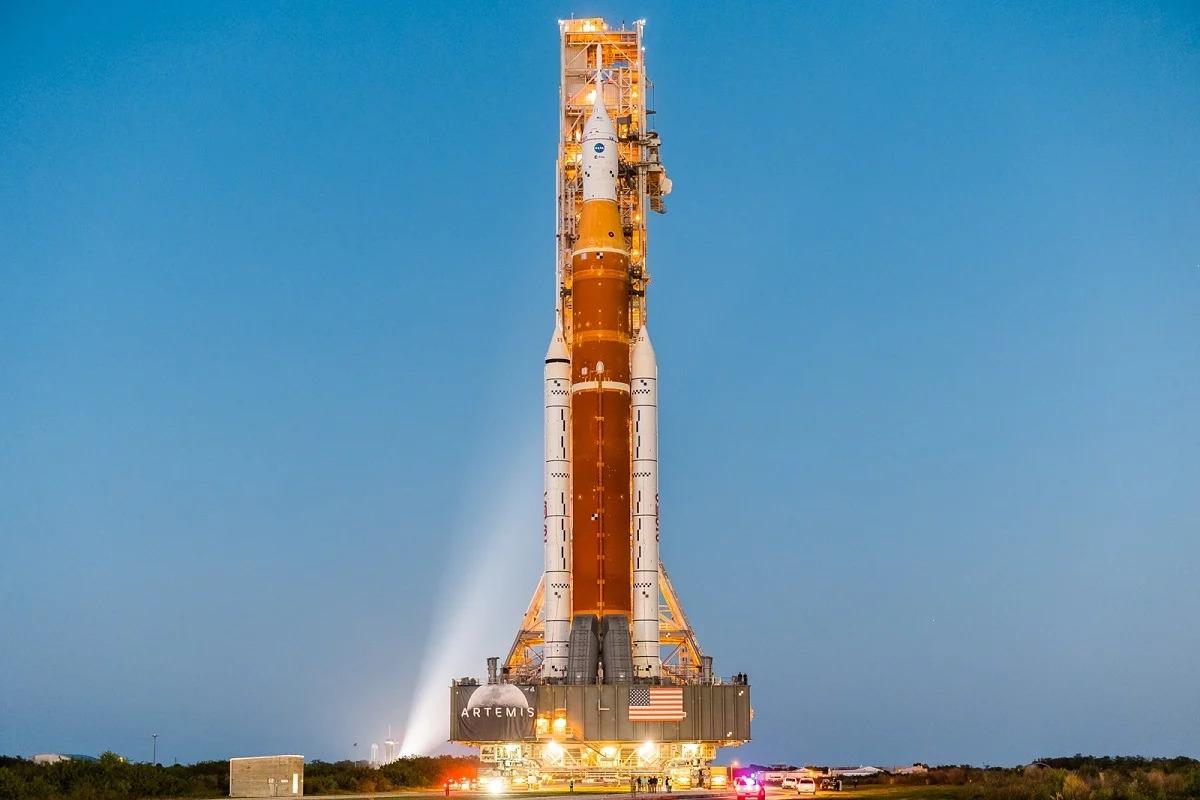By Jordan Liu | Copy Editor

On Dec. 11, the unmanned Orion space capsule landed in the Pacific Ocean off the coast of California, ending its monumental 1.3 million mile journey to the moon and marking the completion of the milestone Artemis 1 mission. According to the National Aeronautics and Space Administration (NASA), during Orion’s 25-day odyssey through space, it completed a full orbit around the moon, collected vital data, and traveled an unprecedented distance from Earth.
“With Orion safely returned to Earth we can begin to see our next mission on the horizon,” Jim Free, a NASA associate administrator, told NASA. “This begins our path to a regular cadence of missions and a sustained human presence at the Moon for scientific discovery and to prepare for human missions to Mars.”
The Artemis 1 mission began on Nov. 16 with the successful lift-off of the Space Launch System (SLS), the most powerful rocket in the world, at the Kennedy Space Center in Cape Canaveral, Florida. That day NASA not only successfully launched Orion into space but also launched phase one of their ambitious Artemis missions, which aim to eventually establish a space base on the moon.
According to CNN, after the SLS transported Orion past the atmosphere, ten small satellites, known as CubeSats, were deployed from the capsule. Six satellites began to conduct technology and radiation tests while the other four journeyed to the moon.
NASA’s associate administrator for human spaceflight Kathy Lueders told NASA that “with more demand for access to the moon, we are developing the technologies to achieve an unprecedented human and robotic presence 240,000 miles from home.”
The Orion capsule contained three test subject mannequins that measured the radiation levels in space as Orion flew 40,000 miles beyond the far side of the moon, farther than any spacecraft designed to carry humans has ever flown before. The information reported by the mannequins will be invaluable for NASA scientists going forward with the Artemis program.
Although Orion was unmanned, NASA plans to use the Artemis 2 and Artemis 3 missions to send human crews to space. Artemis 2, which will send a crew to fly around the moon, is scheduled to launch in 2024, and in 2025, NASA intends to select the first woman and person of color to land on the moon for the Artemis 3 mission.
According to Forbes, the Artemis 1 mission cost $4.1 billion (about 17 percent of NASA’s budget) and NASA is estimated to spend at least $93 billion on the Artemis program by 2025. However, more than money was riding on the success of Orion’s mission as the outcome will determine the fate of future Artemis projects.
The Artemis 1 launch faced several setbacks due to engine cooling problems, fuel leaks, and dangerous weather from Hurricanes Ian and Nicole. Although the launch repeatedly had to be pushed from the original deployment date of Aug. 29, NASA scientists believe that the achievements that Orion accomplished during its journey show promise for the future of the Artemis program.
“The splashdown of the Orion spacecraft – which occurred 50 years to the day of the Apollo 17 Moon landing – is the crowning achievement of Artemis I,” said Nelson. “From the launch of the world’s most powerful rocket to the exceptional journey around the Moon and back to Earth, this flight test is a major step forward in the Artemis Generation of lunar exploration.”
